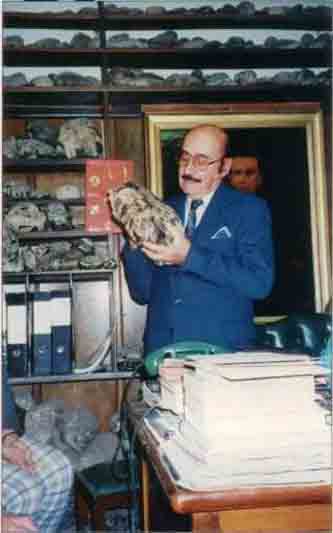Dr. Javier Cabrera
In 1966, knowing of his interest in the local Indian culture, Dr. Cabrera was given an unusual gift for his birthday. It was a small carved rock. The rock seemed to be ancient, but what interested Dr. Cabrera most was that it depicted the outline of a fish, but one that was not common to the area and might even be extinct.
When he asked where this stone was found, he was told that it was found under the ground near the village of Ocucaje. Realizing that these stones could prove to be of great historical importance, he asked if any more could be found. To his astonishment, the farmer began to bring him what seemed like a never ending supply.
Over the years Dr. Canbrera created a small museum at his home in Ica to contain all these stones. His museum ultimately came to contain over 11,000 stones. They ranged in size from tiny palm sized stones to others that were several feet in diameter. How many stones were originally carved has never been determined, for many thousands of other carved stones have been sold to tourists by the inhabitants of Ocucaje to generate income.
 As time passed and word of his unusual collection grew, so more and more people traveled to Ica to visit Dr. Cabrera and see for themselves these extraordinary stones. They were stored in separate rooms, based on their size and on the subject matter they depicted. Dr. Cabrera was always glad to entertain visitors and show off his display.
As time passed and word of his unusual collection grew, so more and more people traveled to Ica to visit Dr. Cabrera and see for themselves these extraordinary stones. They were stored in separate rooms, based on their size and on the subject matter they depicted. Dr. Cabrera was always glad to entertain visitors and show off his display.
All of these stones have images carved into them with continuous lines etched into the surface of the rock. The etched grooves are lighter in color than the rock, but they have a patina of natural oxidation and appear to have been carved in ancient times.
The stones themselves are made of “andesite”, a gray to black volcanic rock that is commonly found in the Andes Mountains. One particular feature of this rock is that, being as hard as granite, it is difficult to cut with ordinary tools. The advantage of using this type of rock is that, being resistant to abrasion, these carvings would last for many thousands of years, particularly in a region as dry as the coastal desert of Peru.




